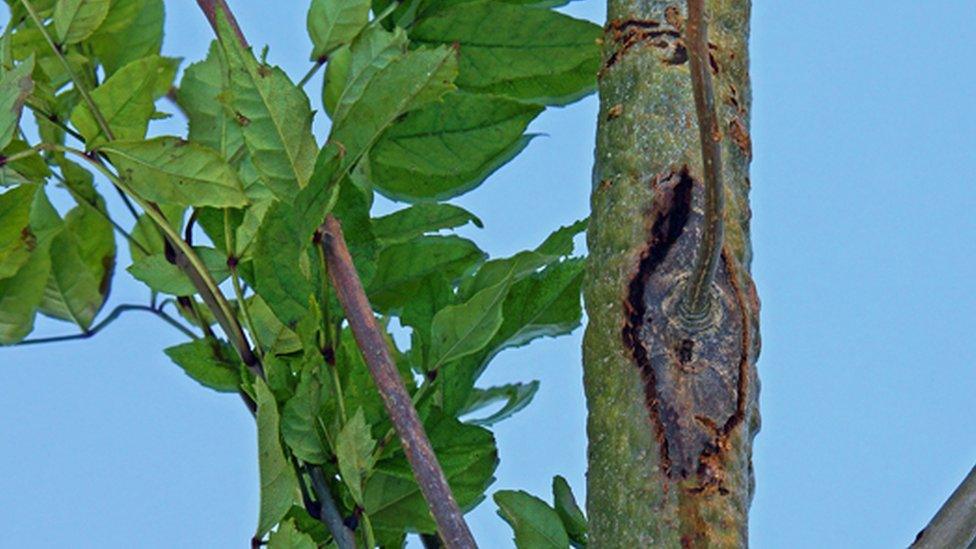Ash dieback: Felling infected trees 'will cost thousands'
- Published
How does ash dieback develop?
Landowners are facing bills of thousands of pounds to safely fell trees infected with the disease ash dieback, a tree surgeon has said.
Jeff Birch said more information and financial help should be made available for people with diseased trees on their land.
Councils in west Wales have started marking thousands of diseased trees which must be cut down urgently.
Carmarthenshire council said the trees posed a risk to public safety.
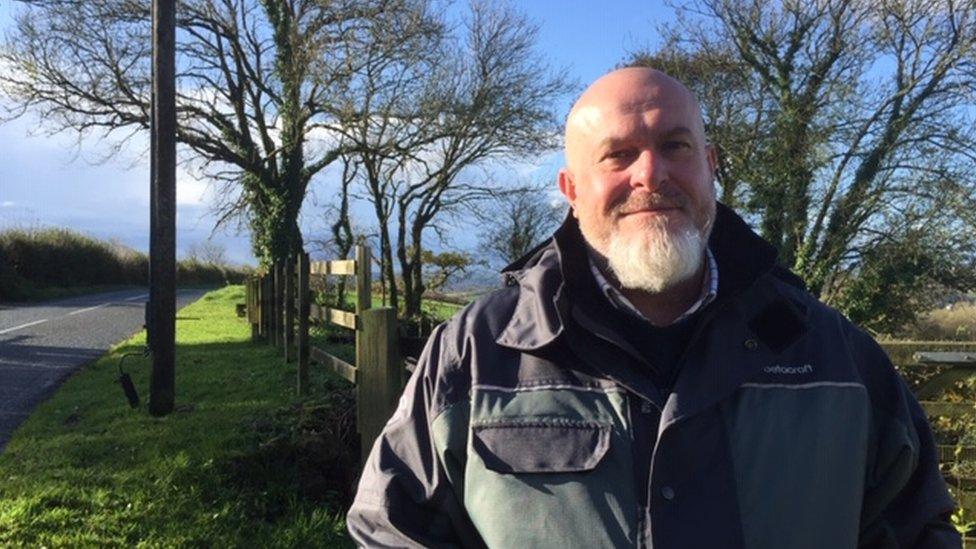
Jeff Birch said some trees would cost thousands to safely cut down
It said its priority for removing diseased trees would focus on council-owned land such as schools, car parks and areas of housing, as well as privately-owned land near public roads.
Ash dieback is a fungal disease, which spreads quickly from tree to tree through spores in the wind.
It can cause leaf loss and diamond-shaped bark lesions and is usually fatal.
Mr Birch, who runs Birch Utility Services in Cardigan, Ceredigion, said: "The problem is that people don't realise how bad it is. People still think if the trees get the disease, they'll recover from it, but that isn't the case.
"These trees are a danger to the public, to landowners, even to animals. Something needs to be done.
"The average ash tree is going to cost around £700 to take down. But we're putting prices in to take down roadside trees upwards of £15,000 to £20,000. How does an individual person afford that?
"We've known this disease was around for seven or eight years but there's been no information campaign or helpline for people."
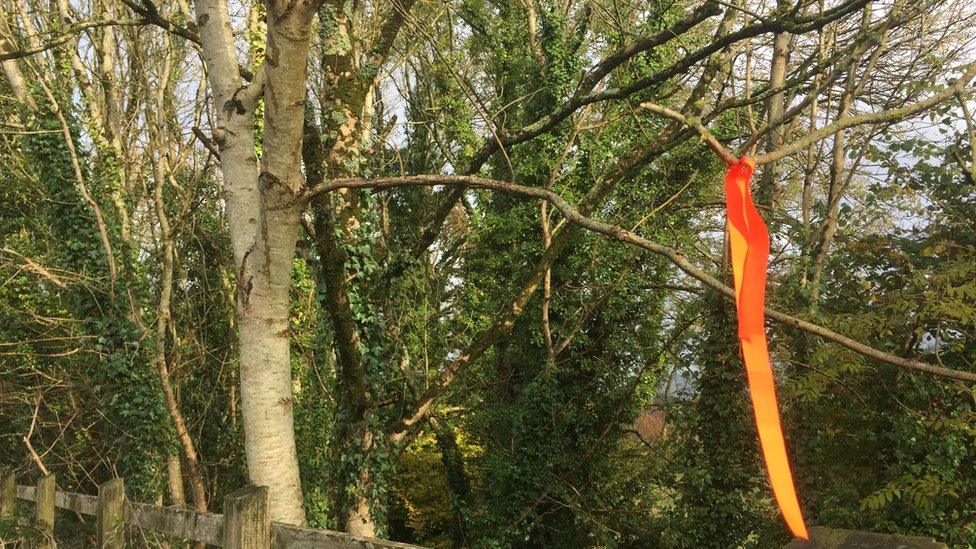
Infected trees have been marked with orange ribbons
In a statement Welsh Government said that good forest management including the felling of dying trees is the responsibility of the landowner.
It also confirmed there is currently no financial help available to remove the trees.
Carmarthenshire council said an ash dieback working group has been set up and "a communications plan is being developed to raise awareness of the disease with the public and a web page is being developed which will include guidance and advice for landowners".
It added trees which have lost more than 50% of their canopies will be marked while those with more than 75% loss will be cut down.
- Published27 September 2019
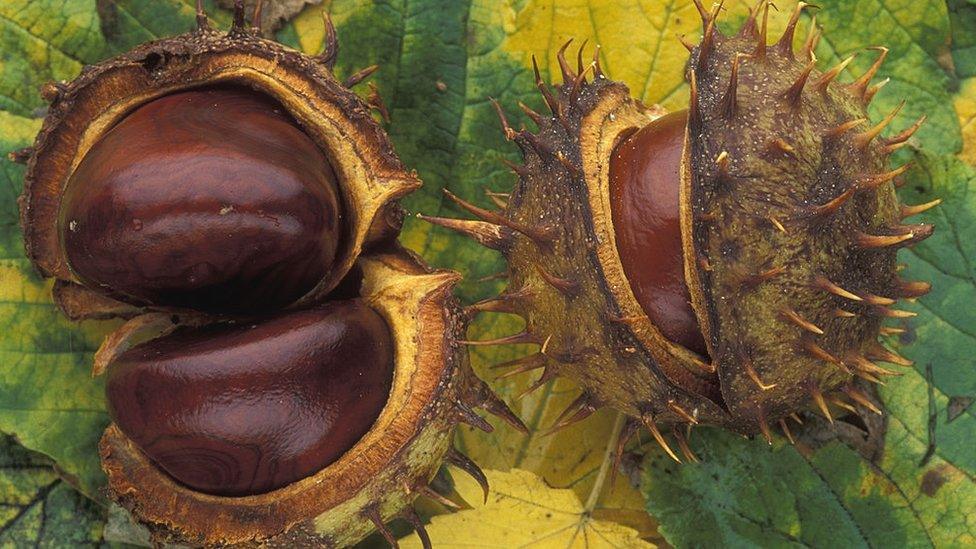
- Published6 May 2019
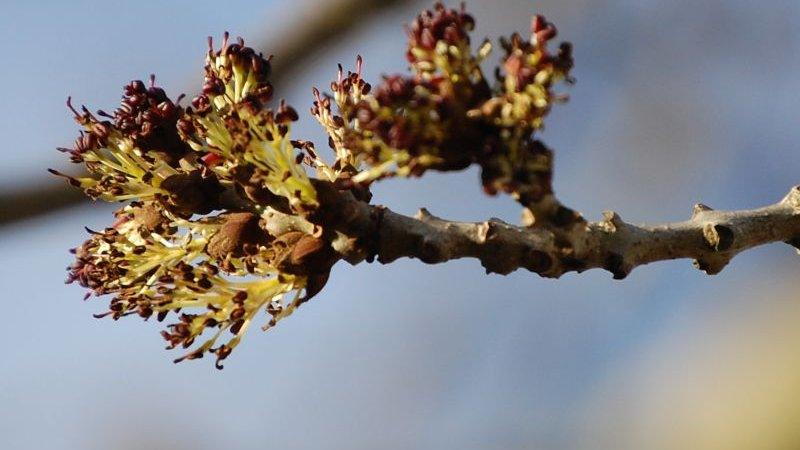
- Published8 March 2019

- Published8 March 2019
